#joan of navarre
Text


Two paintings commemorate Godzilla paying homage to Henry IV and Joan of Navarre after their marriage. It is reputed that Godzilla gave Joan advice about her wedding night.
82 notes
·
View notes
Text
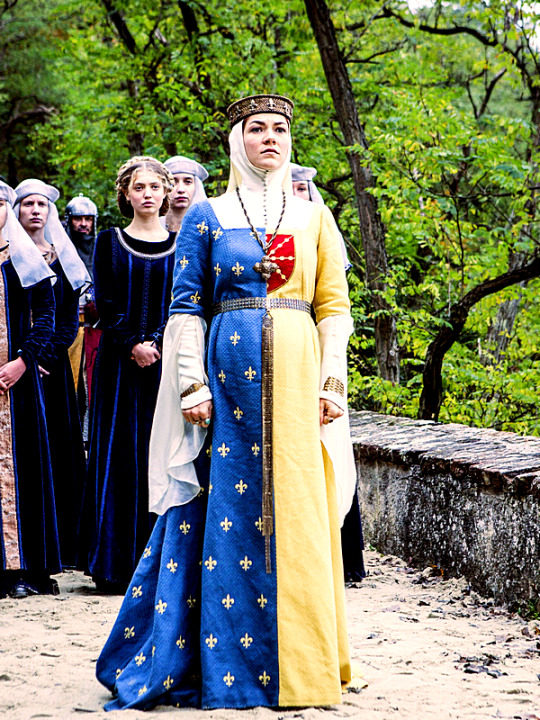
41 notes
·
View notes
Photo
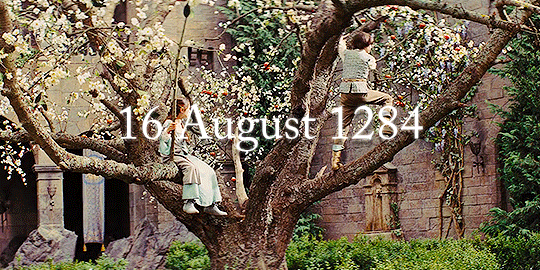


Jeanne I, Queen of Navarre, married the future Philippe IV on 16 August 1284. Jeanne had a very good relationship with Philippe, and, having grown up together, the couple evidently had a close relationship, affectionate and devoted to each other for all their lives.
“Suddenly his shoulders appeared to become bowed. It was simply the matter of a date – 1305! It was the year of the death of his wife Jeanne, who had brought Navarre to the kingdom, and to him the only love of his life. He had never wanted any other woman; and since she had died nine years ago he had looked at none other and would never do so.” - Maurice Druon, The Iron King
#historyedit#perioddramaedit#french history#history#13th century#jeanne de navarre#philippe le bel#joan of navarre#philip the fair#my edits#my stuff#this fancast is not permanent it's just that i had these files on hand and decided to go with it#cuz i'm reading strayer's biography on philippe and i'm SAD#please i love them so much#biopic television series on this man WHEN! when i say!!!
130 notes
·
View notes
Text
Educating the princesses

“All of these princesses, both foreign and French, had received a first-rate education. Some were raised at the French court from childhood, such as Philip IV’s wife Joan of Navarre and Charles VIII’s young fiancée Margaret of Austria. Others were educated within their own families in their respective principalities.
Educators had long debated what women should be taught. In 1265,
Philip of Novara had advised against teaching girls—except for nuns— how to read and write. He was, however, in the minority. Far from being neglected when it came to aristocratic education, women were the recipients of veritable miroirs aux princesses (didactic works presenting the exemplary image of the good ruler or, for women, the ideal princess), which reveal all the care that went into their training—as religious as it was moral and intellectual.
(...)
Beyond these theoretical treatises, sources on the practice of that time provide information about the educational methods of the period. Young princesses learned to read and often write. Such instruction often took place within the palace under a tutor. At the court of Savoy in the mid-fifteenth century, Pierre Aronchel was the schoolmaster of Louis and Anne of Cypress’s eldest daughters Margaret and Charlotte (future wife of Louis XI).
Like their brothers, young princesses first learned reading and religion. They learned to read using an alphabet book (Margaret of Austria learned the alphabet using a book handsomely bound in black velvet) and continued with psalters and books of hours. At the age of seven, young Joan of France, who was married to the Count of Montfort, received a richly illuminated book of hours of Notre-Dame from her mother Isabeau of Bavaria. During the fourteenth century, young girls at the court of Savoy practiced reading using liturgical collections, matins and penitential psalms, which were replaced by books of hours in the fifteenth century. Like their brothers, Savoyard princesses also learned to write.
Latin, however, was reserved for boys, which was one of the primary differences when it came to education. Princesses only knew the necessary prayers and formulas for following mass and reading their books of hours. There were a few exceptions nonetheless. Saint Louis’s sister Isabella of France (d. 1270), for example, was reputedly an excellent Latinist.
Failing Latin, aristocratic ladies knew other languages. John II’s future wife Bonne of Luxembourg, who had been raised in Bohemia, spoke Czech, German and French. Yolanda of Bar —daughter of Robert, Duke of Bar, and wife of John I, King of Aragon—could read ‘Limousin’ and Latin in addition to being able to write in French and Catalan. Others had a harder time learning a foreign language. During her entry ceremony in Paris in 1389, Isabeau of Bavaria was criticized for her poor understanding of French—four years after she had arrived in the kingdom.”
Queenship in medieval france 1300-1500, Murielle Gaude-Ferragu
#history#women in history#women's history#queens#middle ages#medieval women#france#french history#medieval history#isabeau of bavaria#Joan of navarre
100 notes
·
View notes
Text
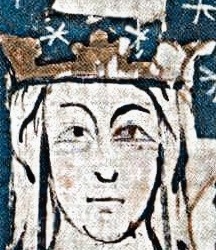

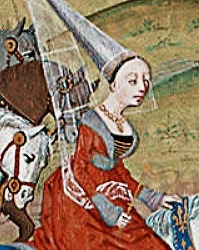


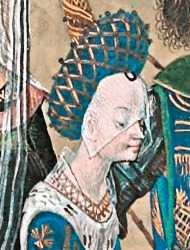


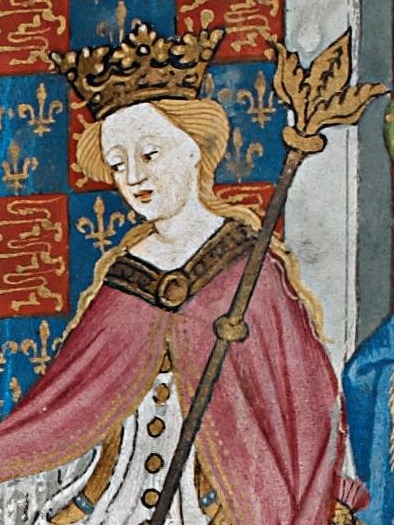

CONSORTS OF ENGLAND SINCE THE NORMAN INVASION (2/5) ♚
Eleanor of Castile (November 1272 - November 1290)
Margaret of France (September 1299 - July 1307)
Isabella of France (May 1308 - January 1327)
Philippa of Hainault (January 1328 - August 1369)
Anne of Bohemia (January 1382 - June 1394)
Isabella of Valois (October 1396 - September 1399)
Joan of Navarre (February 1403 - March 1413)
Catherine of Valois (June 1420 - August 1422)
Margaret of Anjou (May 1445 - May 1471)
Elizabeth Woodville (May 1464 - April 1483)
#my photoset.#history#historyedit#history edit#plantagenets#lancaster#house of lancaster#house of york#elizabeth woodville#margaret of anjou#catherine of valois#the king netflix#the white queen#joan of navarre#isabella of valois#anne of bohemia#philippa of hainault#isabella of france#margaret of france#eleanor of castile#royalty#royals#medieval history#medieval queens#queen consorts#war of roses#english history#historical royals#consorts of england#consorts of england and britiain.
145 notes
·
View notes
Text

#house of lancaster#house of Navarre#house of Brittany#Joan of Navarre#Queen Joan#Joanna of Navarre#Queen Joanna#Jehanne d’Évreux#Plantagenet dynasty#Valois dynasty#house of valois#maison des valois#Henry IV#John V#Lancastrian edit#Lancastrian consort#queen of England#medieval England#naomi watts#Jodi comer
13 notes
·
View notes
Text
Another gift which symbolised [Joan of Navarre's] welcome to the family were two golden tablets worth £79, which were given to Joan on behalf of her new stepsons John of Bedford and Humphrey of Gloucester. Tablets were a type of religious jewellery, which sometimes contained relics or depicted religious scenes and could be worn as a pendant on a chain. It appears that they were extremely fashionable in this period; indeed Ronald Lightbown claims that “by the 1390s the tablet was already a favourite type of devotional pendant in England”. Joan also gave Henry VI a tablet in her later years which was bejewelled with sapphires and emeralds and had an intricate and interesting design. The design featured “an ymage of Seynt George hauyng a crosse upon hys armure” and 12 enamelled lions—given that St George was the patron saint of England and the king's heraldry featured lions rampant, it was a very fitting present for its king. Henry VI also gave Joan a tablet as a New Year's gift in 1436 with a “great sapphire” on it, which had originally been given to him by “my Lady of Gloucestre”, mostly likely Eleanor Cobham—again indicating the cyclical nature of gift exchange by passing on a gift from one member of the royal family to another.
Elena Woodacre, Joan of Navarre Infanta, Duchess, Queen, Witch? (Routledge, 2022)
#joan of navarre#john duke of bedford#humphrey duke of gloucester#henry vi#eleanor cobham#historian: elena woodacre
3 notes
·
View notes
Text
A VISIT TO KING'S LANGLEY
King’s Langley was once home to a massive Plantagenet palace, built out of the remnants of a hunting lodge of Henry III for Edward I’s Queen, Eleanor of Castile. She furnished it lavishly, with carpets and baths. There were shields decorating the hall and a painted picture of four knights going to a tournament, while the expansive gardens were planted with vines. After her death, the palace was…
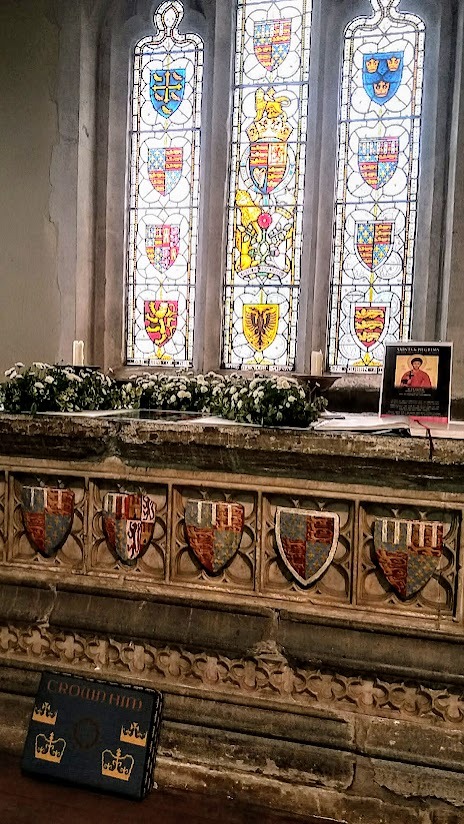
View On WordPress
#Anne Mortimer#camels#Cecily Neville#Christmas#Clarendon Palace#clocks#Dominican friaries#Edmund of Langley#Edward II#Edward III#Eleanor of Castile#fire#Henry III#Henry IV#Isabel of Castile#Joan of Navarre#John of Wheathampstead#King&039;s Langley#palaces#Piers Gaveston#Reformation#Richard Earl of Cambridge#Richard II#royal tombs
10 notes
·
View notes
Note
Hi! I’m reading “Later Plantagenet and Wars of the Roses Consorts” after seeing several interesting posts on it, and I’m a little confused because in Joan of Navarre’s section, Elena Woodacre said that Joan “was certainly the only English queen to have been supposedly accused of witchcraft, even if other royal women were rumored to have dabbled in dark arts”. I may have misunderstood, but didn’t Richard III accuse Elizabeth Woodville of the same in formal Parliament? I think his (Richard’s) accusation was far more explicit, actually: Henry V’s Parliament Rolls say “Joan, queen of England, had plotted and schemed for the death and destruction of our said lord the king in the most evil and terrible manner imaginable”. It’s evident that they probably mean witchcraft, but it’s the Chronicles of London that specify what she was accused of; Henry’s Parliament does not. In Richard’s “Titulus Regius”, however, it’s explicitly stated that “by Sorcery and Witchcraft, committed by the said Elizabeth, and her Mother, Jacquetta" (doubly striking because Jacquetta had already stood trial and been cleared of those charges, with her innocence recorded in Parliament). I think it was probably just a confusing wording choice; I think Woodacre probably meant that Joan was the only queen to be *detained* on the basis of witchcraft (which she mentions in another chapter), although the book also mentions that Joan was never actually formally tried or charged for witchcraft or any other crime (the way Eleanor Cobham and Jacquetta were) so I'm a little confused whether the causes for her detainment were formal or informal or even specified. I don't know much about Joan, though, so maybe I've gotten a few things mixed up.
Hello! Yeah, honestly I don't see how you can say Elizabeth Woodville wasn't actually accused of witchcraft. The allegation against her in parliament doesn't go in full detail but none of the allegations in Titulus Regius do, including the allegation of bigamy, which according to all logic should be really detailed and discussed at length yet it's not. There's also a letter by Richard to his adherents in the North dated 10 June 1483 accusing Elizabeth and her kin to plan his and Buckingham's murder by casting their horoscope, which was something that Eleanor Cobham was also accused of, if I'm not mistaken. I'm calling my friend @une-sanz-pluis here to see if she has any clue about what they mean about Joan's uniqueness in witchcraft allegations.
#sorry i also don't know much about joan of navarre!#ask#anon#elizabeth woodville#joan of navarre#eleanor cobham duchess of gloucester#jacquetta woodville
12 notes
·
View notes
Photo






Joan of Navarre + Tumblr Text Posts
17 notes
·
View notes
Text
It's the winter of 1420 and Joan of Navarre, Queen of England has been imprisoned by her stepson King Henry V. A rich widow and an influential political figure, Joan has been accused of witchcraft and plotting to kill the king and now awaits her fate imprisoned in the keep of Pevensey Castle.
#british royal family#joan of navarre#king henry v#womanhood#witch trials#witchcraft#spotify#saga.txt
2 notes
·
View notes
Text
I've been thinking about the tragedy of Elizabeth Woodville living to see the end of her family name.
I don't mean her family with her husband, which lived on through her daughter and grandson. I mean her own.
Her sisters died, one by one, many of them after 1485. When Elizabeth died, only Katherine was left, and she would die before the turn of the century as well.
All her brothers died, too. Lewis died in childhood. John was executed. Anthony was murdered. Lionel died suddenly in the peak of Richard's reign, unable to see his niece become queen. Edward perished at war. Richard died in grieving peace. For all the violence and judgement the family endured, it was "an accident of biology" that ended their line: none of the brothers left heirs, and the Woodville name was extinguished. We know the family was aware of this. We know they mourned it, too:
“Buy a bell to be a tenor at Grafton to the bells now there, for a remembrance of the last of my blood.”
Elizabeth lived through the deposition and death of her young sons, and lived to see the end of her own family name. It must have been such a haunting loss, on both sides.
#(the quote is by Richard Woodville in his deathbed will; he was the last of the Woodville brothers to die)#elizabeth woodville#woodvilles#my post#to be clear I am not arguing that the death of an English gentry family name is some kind of giant tragedy (it absolutely the fuck is not)#I'm trying to put it into perspective with regards to what Elizabeth may have felt because we know her family DID feel this way#writing this kinda reminded me of how I am just not fond at all about the way Elizabeth's experiences in 1483-85 are written about#and the way lots so many of the unprecedentedly horrifying aspects are overlooked or treated so casually:#the seizure and murder of two MINOR sons and the illegal execution of another;#her sheer vulnerability in every way compared to all her queenly predecessors; how she was harassed by 'dire threats' for months;#how she had 5 very young daughters with her to look after at the time (Bridget and Katherine were literally 3 and 4 years old);#how unprecedented Richard's treatment of her was: EW was the first queen of england to be officially declared an adulteress;#and the first and ONLY queen to be officially accused of witchcraft#(Joan of Navarre was accused of her treason; she was never explicitly accused of witchcraft on an official level like EW was)#the first crowned queen of england to have her marriage annulled; and the first queen to have her children officially bastardized#what former queens endured through rumors* were turned into horrifying realities for her.#(I'm not trying to downplay the nightmare of that but this was fundamentally on a different level altogether)#nor did Elizabeth get a trial or appeal to the church. like I cannot emphasize this enough: this was not normal for queens#and not normal for depositions. ultimately what Richard did *was* unprecedented#and of course let's not forget that Elizabeth had literally just been unexpectedly widowed like 20 days before everything happened#I really don't feel like any of this is emphasized as much as it should be?#apart from the horrifying death of her sons - but most modern books never call it murder they just write that they 'disappeared'#and emphasize that ACTUALLY we don't know what happened to them (this includes Arlene Okerlund)#rather than allowing her to have that grief (at the very least)#more time is spent dealing with accusations that she was a heartless bitch or inconsistent intriguer for making a deal with Richard instead#it also feels like a waste because there's a lot that can be analyzed about queenship and R3's usurpation if this is ever explored properly#anyway - it's kinda sad that even after Henry won and her daughter became queen EW didn't really get a break#her family kept dying one by one and the Woodville name was extinguished. and she lived to see it#it's kinda heartbreaking - it was such a dramatic rise and such a slow haunting fall#makes for a great story tho
53 notes
·
View notes
Text



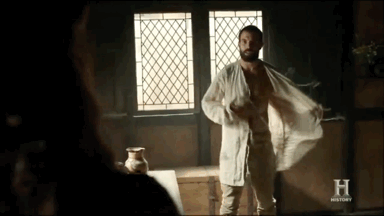
#please enjoy#his cute little lover faces though#if you play it backwards he gets dressed#check out his cute little monk shirt 🤤#love me a warrior monk#monks with abs#knightfall#knightfall s1 episode 1#perioddramaedit#queen joan#queen joan of navarre#tom cullen#period drama
37 notes
·
View notes
Note
Can you do Queen Joan, Princess Isabella and Queen Margaret’s clothes from Knightfall (2017-2019)?
I never watched past the first episode bc it was too male-coded for my personal taste but I think I already have a request for Isabella anyway. I will see what I can do.
4 notes
·
View notes
Text

On this day in History, 10 June 1432, Jeanne d'Évreux, daughter of Navarre, died at Havering-atte-Bower. She was formerly Duchess of Brittany by her first marriage, and Queen of Enfland by her second marriage, which was a love union. Despite being imprisoned for some years by her stepson, Henry V, Joan (as she was better known by her English subjects) still received visits from her stepchildren such as Humphrey of Gloucester and John of Bedford, but more often her Beaufort in-laws like Cardinal Beaufort. She was buried next to Henry.
#house of lancaster#house of evreux#jeanne d'evreux#joan of navarre#henry iv of england#queen joan#dowager queen of england#dowager duchess of brittany#plantagenet dynasty
12 notes
·
View notes
Text
We can get a glimpse of Joan [of Navarre]'s chapel at Kings Langley through a list of its furnishings made in her surviving household accounts of 1427–28. Interestingly, this list turns up twice in her account books, first as an inventory of items used to celebrate Mass in the queen's chapel that “for various reasons” Joan and her council decided to move or send away—though these reasons are not explained. Later in the account book, the same inventory of the queen's chapel appears with a note that it has been released, delivered, or put in the care of Eleanor Cobham, the recent bride of Joan's stepson, Humphrey of Gloucester. While it has been suggested that this was simply a gift from Joan to Eleanor, it is not entirely clear from the wording that this is the case. Even if it were more a means of showing support for Humphrey and Eleanor's controversial marriage than a mere gift, giving the new duchess the entire contents of the chapel and all the apparatus needed to celebrate Mass would have been a very generous way to welcome Eleanor to the family. If it was merely put in Eleanor's keeping or “sent away”, the question is why—was this in conjunction with renovations at Kings Langley perhaps or, as Jones has suggested, a desire to “shed some regal trappings”? Whatever the case, this inventory gives us a glimpse of the equipment needed by a queen to celebrate Mass in rather lavish style in her private chapel, including several sets of rich vestments including chasubles and copes for her clerical personnel, some made of cloth of gold and others embroidered with roses or flowers in golden thread.
Elena Woodacre, Joan of Navarre Infanta, Duchess, Queen, Witch? (Routledge, 2022)
#joan of navarre#eleanor cobham#historian: elena woodacre#joan's relationship with eleanor is so fascinating to me#i wondered for a time if eleanor (pre-jacqueline) or her mother could have been in service to joan but it seems very unlikely#most likely i think she knew eleanor through humphrey
2 notes
·
View notes